Abstract
Groups of pigeons were trained to depress a treadle in the presence of a compound stimulus consisting of a tone and a red houselight (a) to avoid electric shock, or (b) to obtain grain. Immediate, exteroceptive feedback was equated for avoidance and appetitive groups within an experiment, but varied across experiments from elevation of a nonilluminated feeder to darkening of the chamber, termination of the tone, and elevation of an illuminated feeder. Responding in the absence of the compound stimulus postponed its next occurrence. After performance had stabilized, the degree to which each element controlled treadle pressing was determined. Generally, in the appetitive tests, the red light controlled much more responding than did the tone, but in the avoidance tests, the tone controlled more responding than did the red light.
Full text
PDF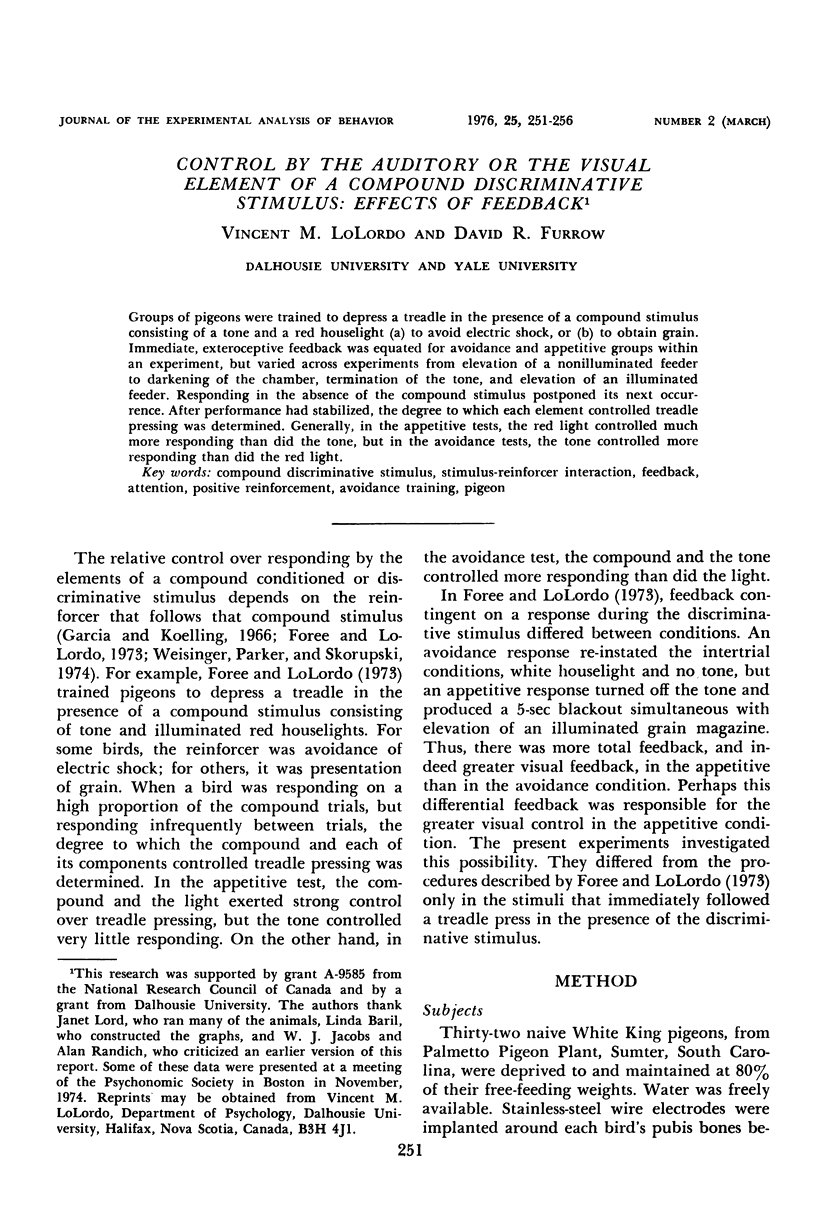
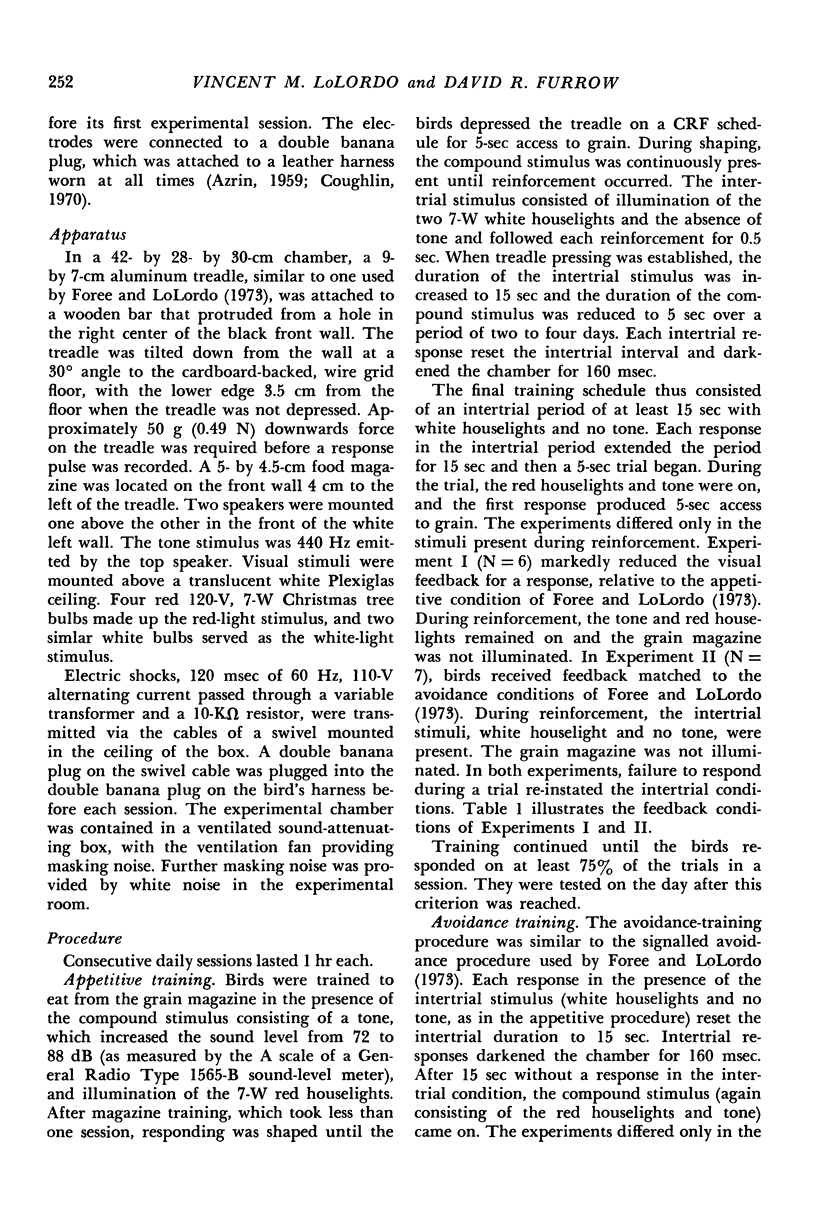
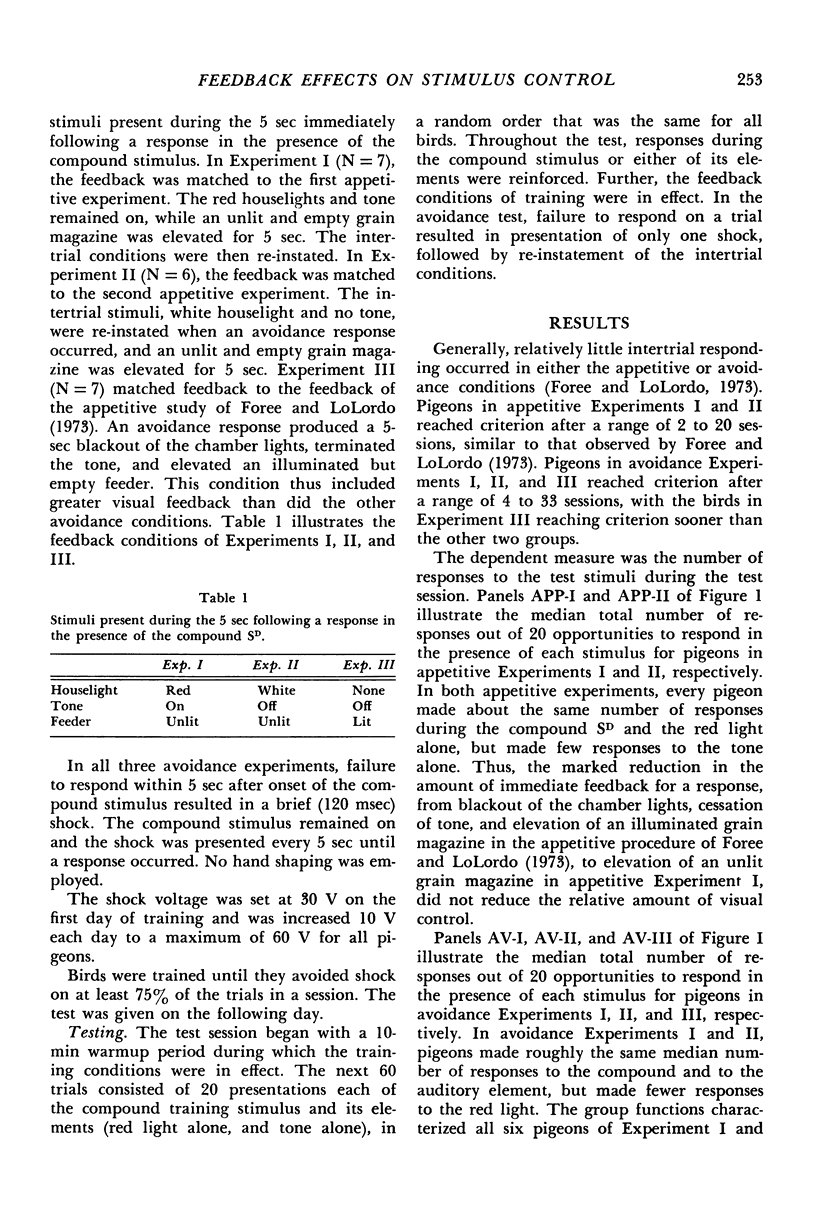
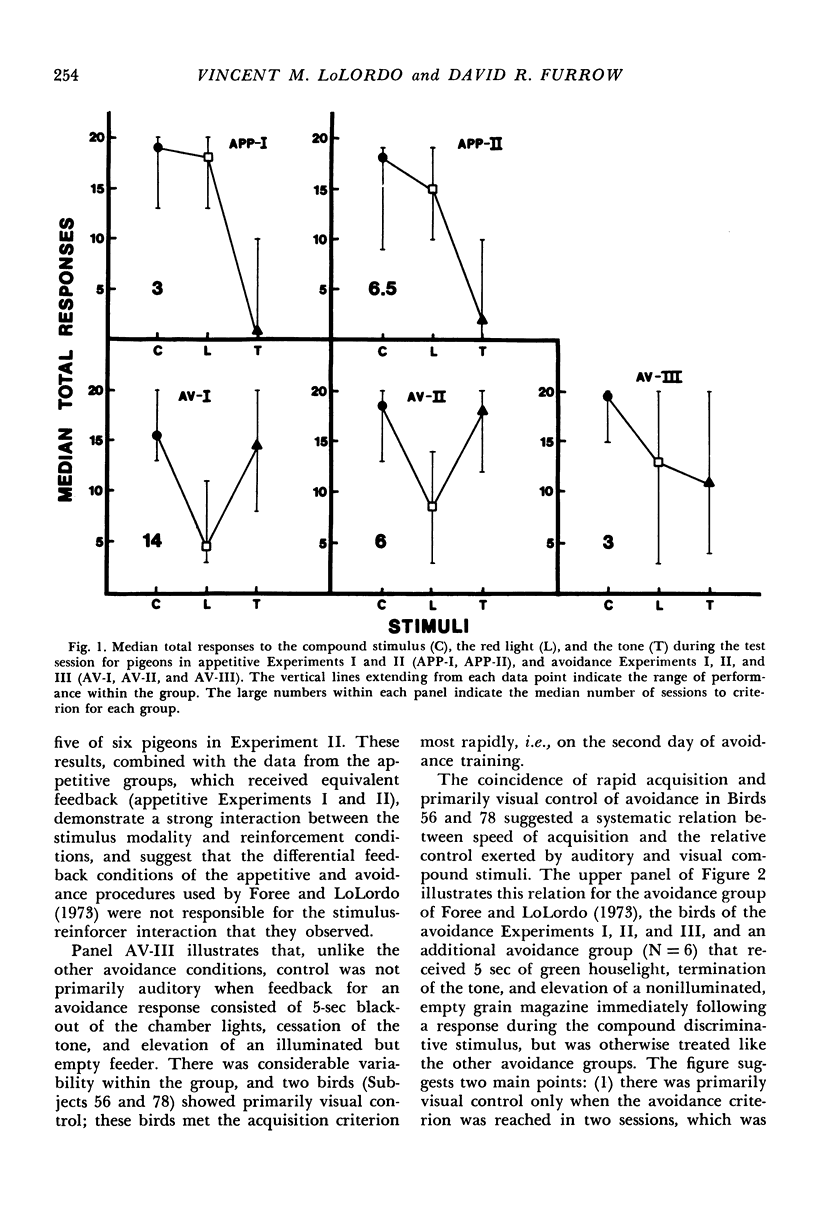
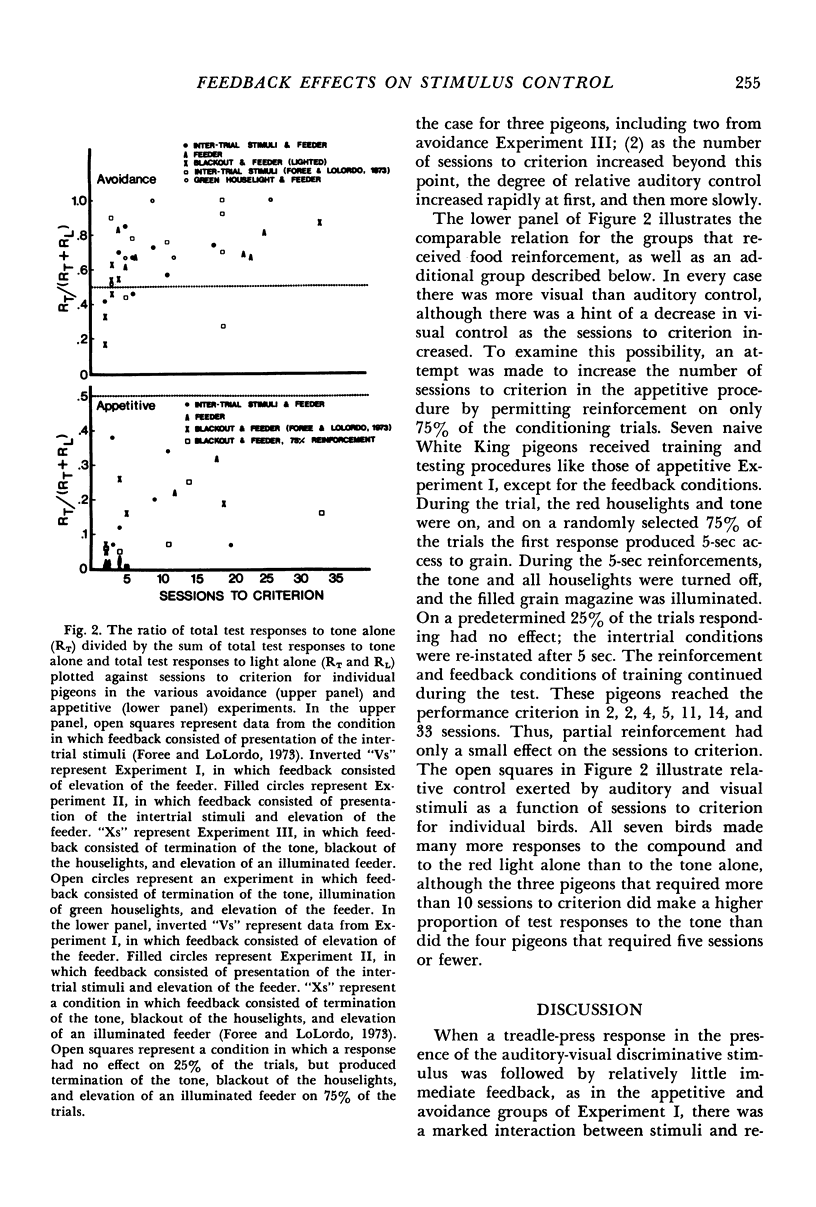
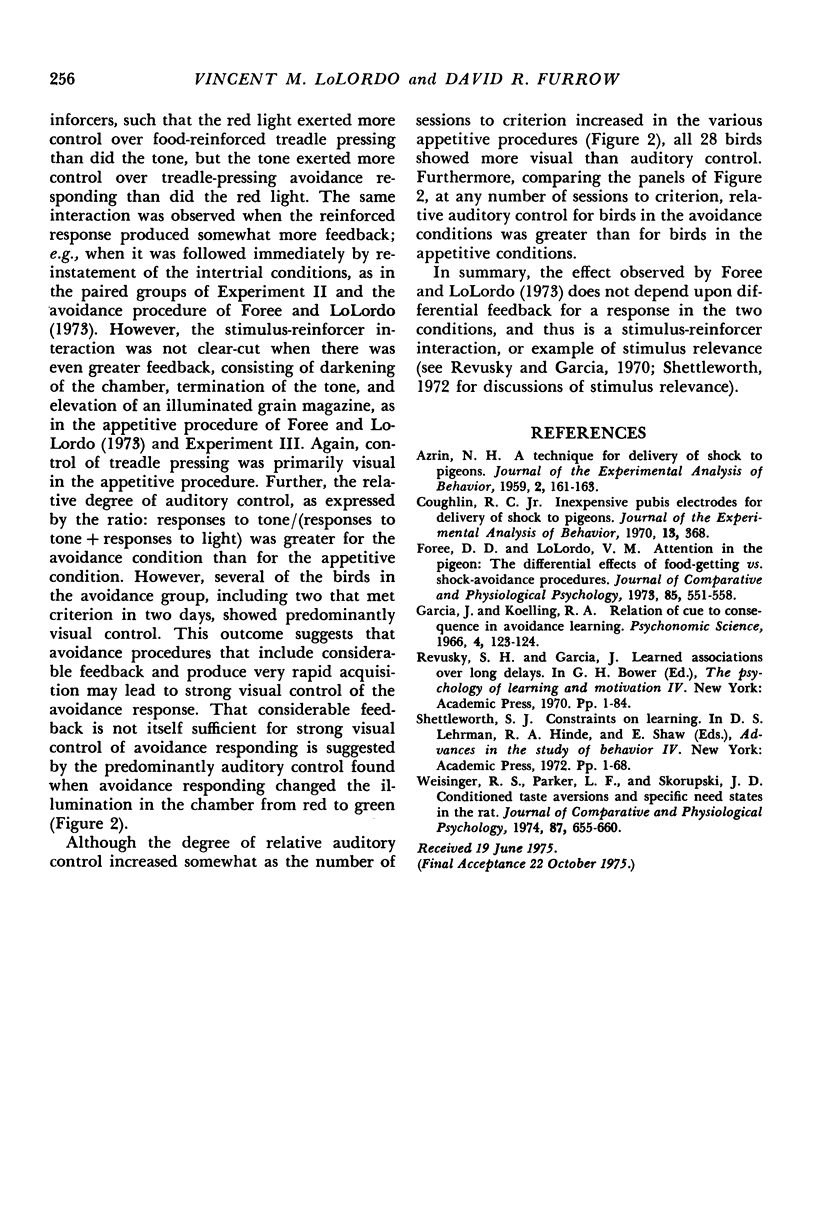
Selected References
These references are in PubMed. This may not be the complete list of references from this article.
- AZRIN N. H. A technique for delivering shock to pigeons. J Exp Anal Behav. 1959 Apr;2:161–163. doi: 10.1901/jeab.1959.2-161. [DOI] [PMC free article] [PubMed] [Google Scholar]
- Coughlin R. C. Inexpensive pubis electrodes for delivering shock to pigeons. J Exp Anal Behav. 1970 May;13(3):368–368. doi: 10.1901/jeab.1970.13-368. [DOI] [PMC free article] [PubMed] [Google Scholar]
- Foree D. D., LoLordo V. M. Attention in the pigeon: differential effects of food-getting versus shock-avoidance procedures. J Comp Physiol Psychol. 1973 Dec;85(3):551–558. doi: 10.1037/h0035300. [DOI] [PubMed] [Google Scholar]
- Weisinger R. S., Parker L. F., Skorupski J. D. Conditioned taste aversions and specific need states in the rat. J Comp Physiol Psychol. 1974 Oct;87(4):655–660. doi: 10.1037/h0036980. [DOI] [PubMed] [Google Scholar]


